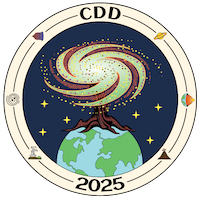Orateur
Description
Tsunamis are one of the most destructive natural hazards causing heavy human losses. They can be generated by submarine earthquakes and/or volcanic eruptions and landslides) and it is almost impossible to forecast their impact.
A near-real-time monitoring of tsunamis is required for population’s safety. Differents methods are currently used to monitor tsunami propagation in both near field (<500 km from the source) and far-field (>500 km away the source) like seafloor pressure sensors, DART and tide gauges. However, most of tsunamigenic areas are still not instrumented and the monitoring remains very challenging. An alternative approach would be to use the ionosphere, the upper layer of the atmosphere, in order to detect tsunamis and monitor their propagation. Tsunamis propagation generate internal gravity waves that can be detected in the ionosphere within 20-60 minutes after they are generated at the ocean surface. By using measurements of total electron content (TEC) from GNSS-receivers, one can detect co-tsunamic ionospheric disturbances (TTIDs), and estimate tsunami parameters based on analysis of TTIDs’ characteristics.
However, numerous disturbances can travel in the ionosphere and can mask the TTIDs. Therefore, monitoring tsunami propagation requires a method for detecting ionospheric perturbations, separating those induced by tsunamis from others, and determining spatio-temporal features of TTIDs. The first step in this development is to create a collaborative database containing the TTID information recorded by GNSS receivers. This contribution will present our newly developed strategy for detecting tsunamis from the ionosphere, and the challenges to overcome.
| Speaker information | PhD 1st year |
|---|

